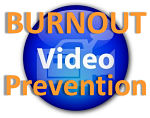 3 Keys to Building a Better Day Off
3 Keys to Building a Better Day Off
If your work is stressful, a day off should be a way to recharge and an oasis of rest and rejuvenation ... right?
How often are your days off simply playing catch up on a different punch list, punctuated by frustrating calls from the office or hospital? Let me show you some ways to ensure you are not doing laundry, mowing the lawn or answering nurses questions on your day off.
In this short video, you will learn three essentials to building the highest quality day off possible. When you do these three things it will transform your day off into the oasis you are seeking. These tools are just as powerful and relevant to build a better, vacation or year-end holiday break.
I even include what to say to the office or hospital if they call you on your day off - so they never call you again.
PLEASE LEAVE A COMMENT:
What are your secrets to a quality day off?
VIDEO TRANSCRIPT:
The Relationship between Physician Burnout, Stress and Performance
Hi. Dr. Dike Drummond here from thehappymd.com. And in this short video, I’m going to show you the difference between good and bad stress and an actual graph that relates stress to physician performance. It’s really important that you understand where you are in the graph so you don’t end up taking the last bit of stress over the edge as your last straw.
Every time I do a live physician burnout training, somebody asks me, “Well, Dike, isn’t there such a thing as good stress?” And the answer is yes.
Stress can be good at all depends on where you are on the stress versus performance graph. So, let me just show that to you over here. There’s the bell shaped curve that relates stress to physician performance. On the left hand side where there isn’t very much stress, you don’t get much performance. As a matter of fact, people can get bored and check out.
But as you increase the stress on the person, give them a deadline, ask them if they’ve completed the task, you’ll see that performance increases to a peak. But then if I continue to apply stress, performance drops off rather dramatically, a far side “cliff” of performance. So, there is such a thing as good stress. It all depends on where the person is on the graph on that day.
Now, here’s the big problem. Here’s where I think most healthcare work teams are sitting in an average office day. Here’s the graph. Look at that orange line. Yeah, I think their past the peak and on the downward side.
So, if that’s true for you or your team on any given workday and I continue to apply stress, what happens? You fall off the cliff. You could completely decompensate. I have be brought into organizations because a high producer was found curled in the fetal position on the bathroom floor, completely overwhelmed by the stress of that particular day.
So, the difference between good stress and bad stress depends on where you are on the curve. The problem is that as a physician, you’ve been trained specifically to ignore your stress levels, to not be aware of them at all. So, this is one of the key leadership skills as you move forward in your practice, to notice what your stress level is today. Even better, notice what your team’s stress level is today so you can figure out whether today you apply a little more pressure to get a little more performance or you back off the pressure. And that actually improves the team’s performance.
So, there it is. The connection between good and bad stress depends on where you on the curve. Notice that first before you put anymore pressure on your team. That’s it for now. Keep breathing and have a great rest of your day.


 3 Keys to Building a Better Day Off
3 Keys to Building a Better Day Off